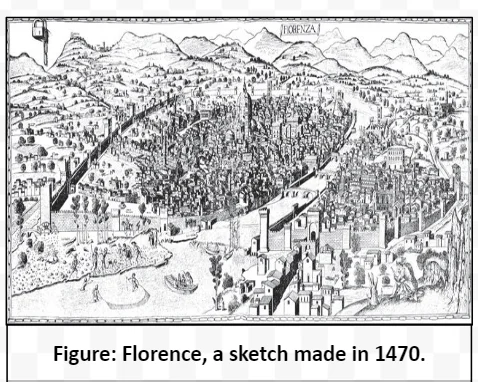![]() 5 Jul 2024
5 Jul 2024
Introduction
From the 14th to 17th century, European towns experienced growth and developed a distinct urban culture. People in towns began to view themselves as more “civilized” than rural dwellers, with towns like Florence, Venice, and Rome becoming centers of art and learning. The invention of printing made books and prints available to many people. A sense of history also developed in Europe, and people contrasted their ‘modern’ world with the ‘ancient’ one of the Greeks and Romans.
Scientific Revolution: Scientific discoveries challenged the Church’s geocentric view, and new geographical knowledge shifted the Eurocentric perspective.
Post Roman Decline: After the fall of the Western Roman Empire, many Italian towns that had once been political and cultural centers fell into decline. Italy lacked a unified government, and the Pope in Rome held more religious than political influence.
The City-State
|

| Must Read | |
| Current Affairs | Editorial Analysis |
| Upsc Notes | Upsc Blogs |
| NCERT Notes | Free Main Answer Writing |
Early Italian Universities: The early universities, such as those in Italian towns like Padua and Bologna, had initially focused on legal studies due to the growing demand for lawyers and notaries in commercial centers.


Conclusion
The Renaissance fostered a shift from a religious worldview to a more humanistic one. Italian city-states, with their focus on trade and civic participation, became centers of learning and artistic expression. This cultural revival laid the groundwork for a new era in European thought.
| Related Articles | |
| List of Joint Military Exercises of India | Roman Empire: Stories of Empires, Equality, Change Across Three Continents |
| MEDIEVAL HISTORY | European Parliament Elections |
<div class="new-fform">
</div>